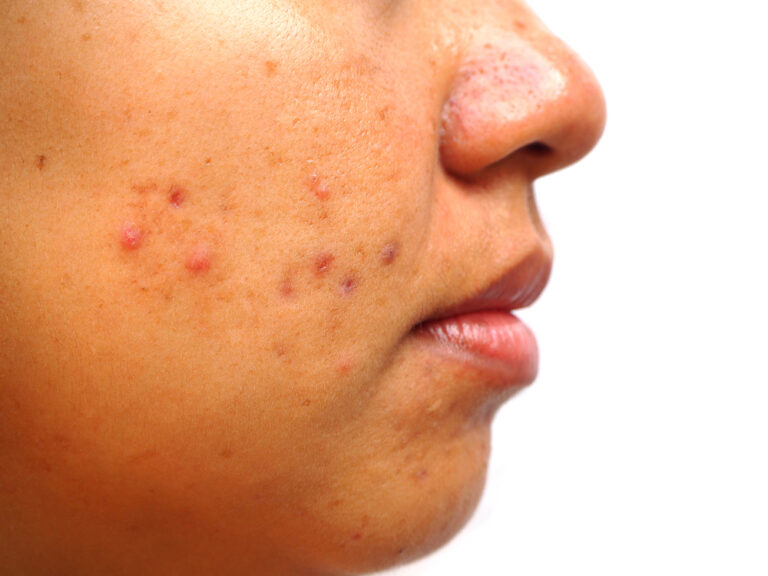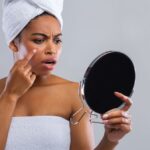There are six main causes that trigger acne and breakout activity. Some may experience one or more, depending on the individual…
1. Stress – breakouts are highly associated with internal stress levels. The skin actively responds to stress as there are stress mediators in the skin. For example, chronic stress increases stress-related hormones such as cortisol, which send sebaceous glands into overdrive. This leads to excess sebum (oil), which mixes with dead skin cells and P. acnes (Propionibacterium acnes) bacteria to clog follicles, resulting in breakouts. The skin barrier becomes weak as it loses some of its ability to protect itself. Cortisol also lowers the natural production of Hyaluronic Acid, which can leave the skin dehydrated.
2. Hormonal Changes – this is another culprit of breakouts. In men, testosterone is secreted by the male reproductive organs. In women, it originates from the ovaries and adrenal glands. In both sexes, testosterone interacts with the sebaceous gland where enzymes convert it into DHT (sex hormone). This increases sebum production that is thicker and stickier. Adult women are five times more likely than men to be affected by acne due to fluctuating hormones. Women tend to experience hormonal fluctuations and acne around the time of menstruation, pregnancy, and menopause.
3. Lifestyle Habits – these habits that trigger breakouts can be; smoking, ineffective cleansing, improper product usage, wearing tight or itchy clothing or taking certain medications. Hair, make-up or skincare products that contain comedogenic ingredients can lead to clogged follicles. Picking or squeezing breakouts can also spread P. acnes. Aggressive acne treatments can increase inflammation, dryness and sensitivity around breakouts, making them appear redder and flakier.
4. Environmental Exposure – Sun exposure, pollution, local environment and extreme weather; are some factors that can compromise the skin barrier and trigger or increase issues such as inflammation, hyperpigmentation, dryness and dehydration, which can make acne appear worse.
5. Genetics – this can play a role too as acne tends to run in the family. While there isn’t a specific ‘acne gene’, some people have a hereditary tendency to overproduce skin cells or sebum (oil), which then increases the likelihood that they will have clogged follicles, therefore leading to breakouts.
6. Diet – food may influence sebum production and inflammation. High sugar content can increase oil production and breakouts. Low-glycemic diets, which includes a variety of fruits and vegetables, lean protein, and healthy fats, are recommended for people with breakout-prone skin.



